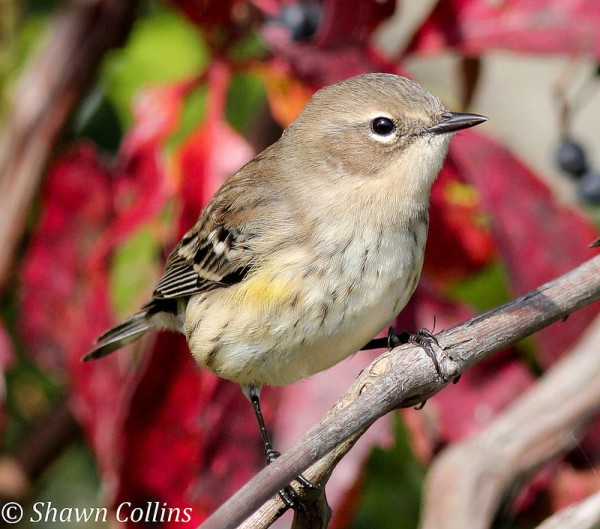
They’re here! The yellow-rumped warblers are back from Canada, on their way to the lower Ohio Valley, the southern U.S., and Central America for the winter.
Yesterday Karyn Delaney and her husband stopped counting at 100 when they found so many yellow-rumps on the Pine Tree Trail at Presque Isle State Park. Shawn Collins snapped this one in Crawford County.
Like the first snowfall I’m excited to see my first big flock of yellow-rumped warblers in southwestern Pennsylvania. I haven’t found a flock yet but I think I’ve heard one bird — just one — at Schenley Park.
Unfortunately, just like snow I soon tire of them. I remember at Magee Marsh last May when my first reaction to seeing yellow-rumped warblers was “Wow!” and within an hour it was “Darn! Another yellow-rump.” Their abundance becomes boring.
But I haven’t seen them yet, so for the moment this bird is exciting.
(photo by Shawn Collins)
Birds and their movements are still a mystery to me. We’ve been seeing them in ABQ for the past 5 weeks. And yesterday there were a dozen or so at the Melrose Trap. But I don’t think that we get flocks that large. Is it because they are crossing Lake Erie?
Steve, the concentrations are partly sure to Lake Erie but there are certainly a lot of yellow-rumps. They spend the winter in Ohio & south but are scarce right here. Kind of odd, but it makes them fun for us in SW PA.
Bird banders lovingly refer to Yellow-rumped Warblers as “Butterbutts!” They are the most gregarious of all the wood warblers. Look for them (and listen for their characteristic dull “chips”) wherever thick poison ivy vines have crawled up the sides of a tree and sent out dozens of their short, fruiting horizontal branches, each laden with bunches of small whitish green fruits that these warblers (and many other birds) love.
And when they get down here to Louisiana they are HUNGRY and LOUD.
the yellow rumped pictured looks entirely different from the pictures at Cornell Labs. Is it a juvenile?
In the spring the yellow-rumps look very spiffy with bright yellow, black and white. In late summer they molt into dull colors. This one is a “confusing fall warbler” probably a female.